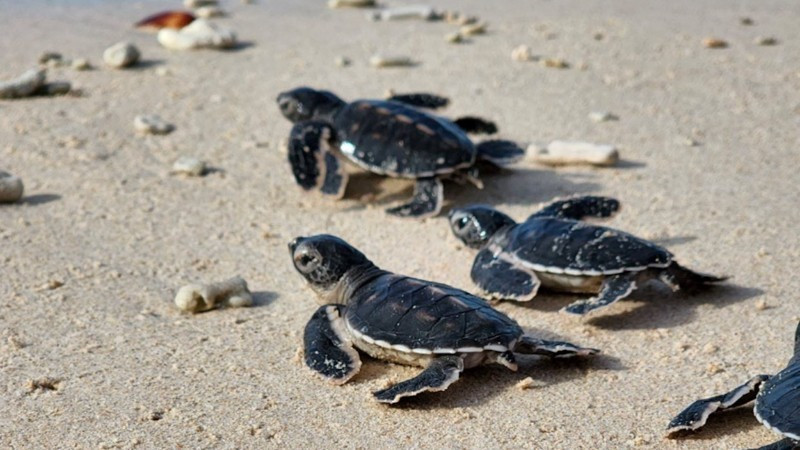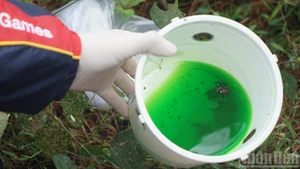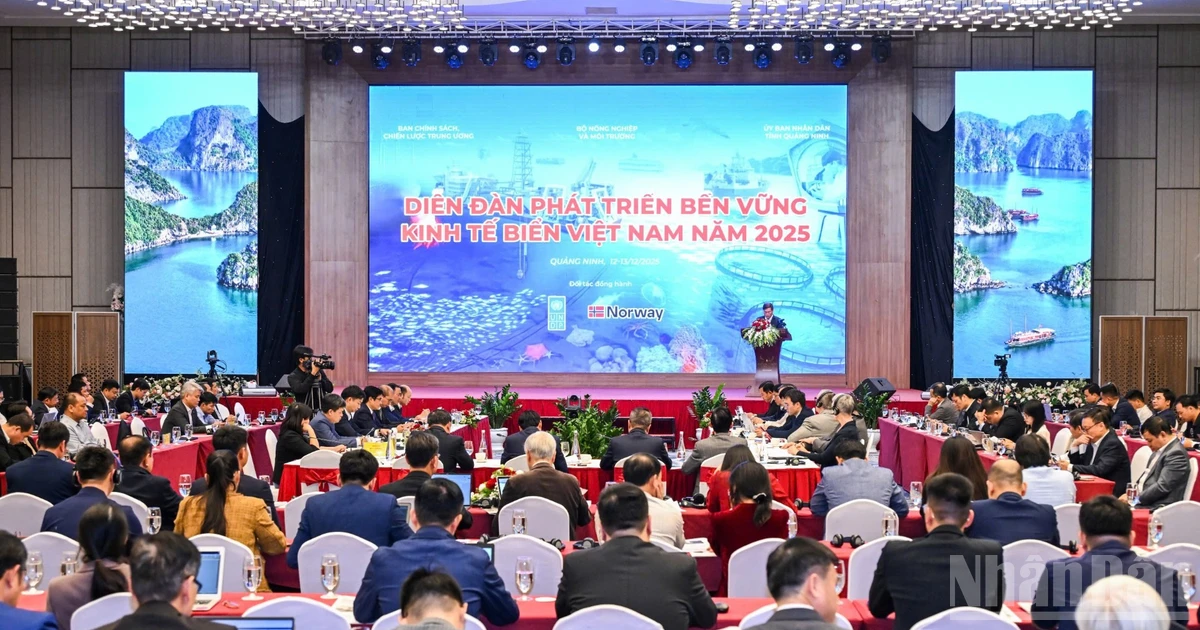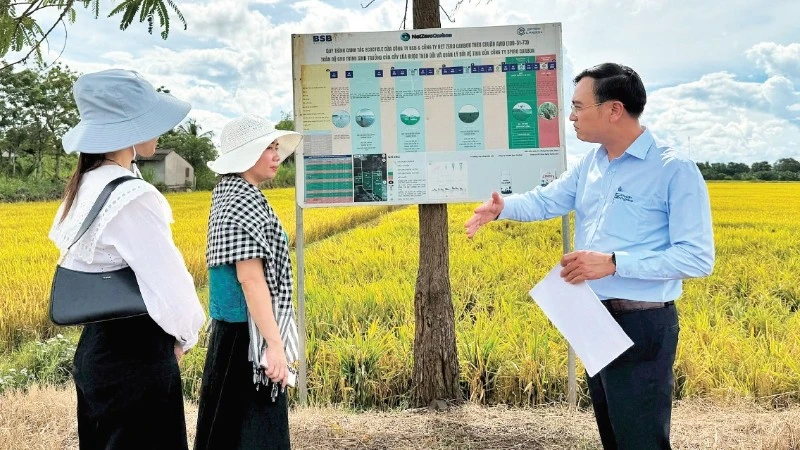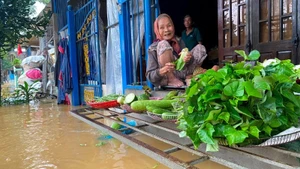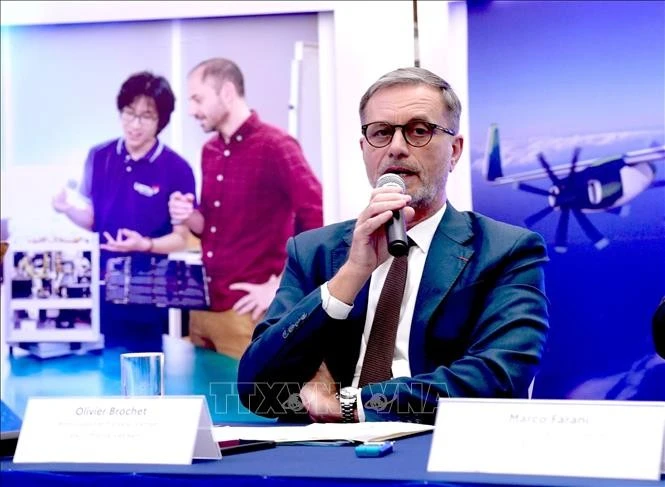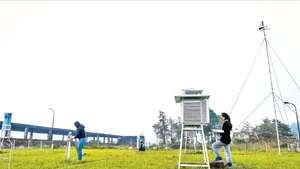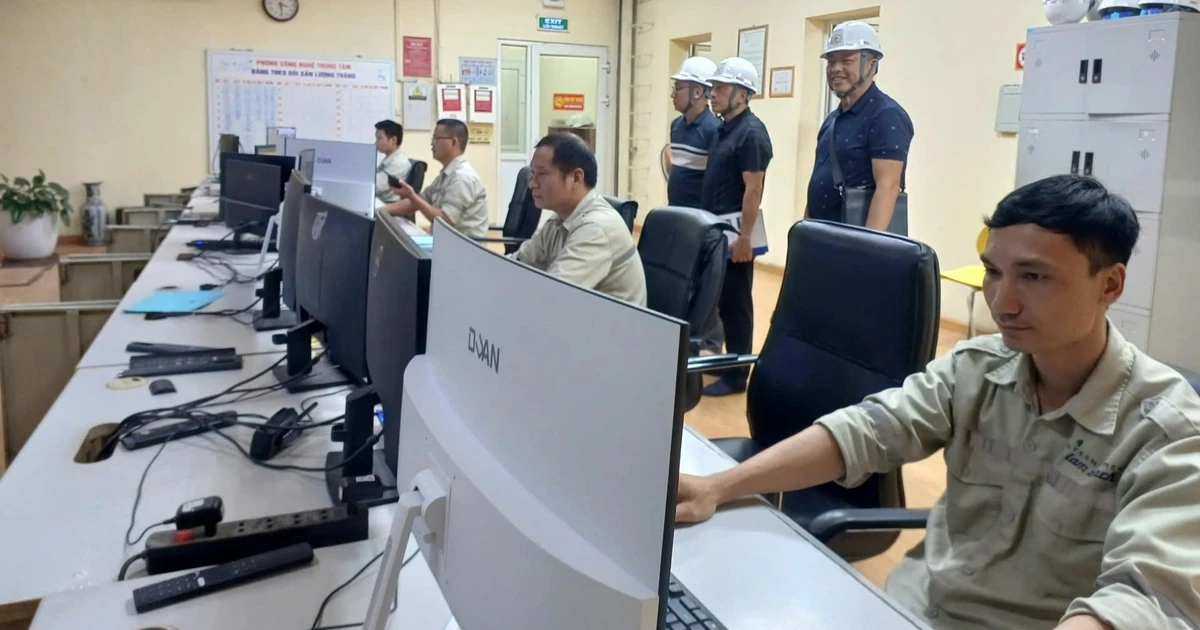In recent years, eco-tours and educational trips linked to sea turtle conservation have redefined travel, no longer just about “sight-seeing”, but about “taking action”: releasing turtles back into the ocean and bringing people closer to nature.
A magical journey
Just before dawn on a July night at Hon Bay Canh – one of the largest and most beautiful islands in Con Dao National Park – Nguyen Van Quoc Thai (born in 1997, Tay Ninh) witnessed, for the first time, a green turtle (also known locally as vích) quietly emerging from the sea, searching for a flat patch of sand and beginning to dig her nesting site.
Only a few metres away, Thai and his group of volunteers remained silent, observing in suspense and joy, as if taking part in a sacred ritual of nature. “Sea turtles are such beautiful and mysterious creatures. When I saw mother turtles coming ashore to lay eggs after travelling thousands of kilometres across the ocean, I felt I needed to do something,” Thai enthusiastically shared after a sleepless night on turtle watch with rangers at Hon Bay Canh.
Earlier in 2025, after a friend introduced him to a sea turtle conservation programme co-organised by the International Union for Conservation of Nature (IUCN) and Con Dao National Park, Thai registered and was fortunate to be selected. Alongside about 20 other participants, he joined night patrols, assisted mother turtles with nesting, and helped tag their shells with identification markers to monitor their lifecycles and reproductive frequency.
The young volunteers gained not only knowledge about sea turtles but also insights into the marine ecosystem of Con Dao, along with life skills such as swimming, diving, and identifying poisonous creatures.
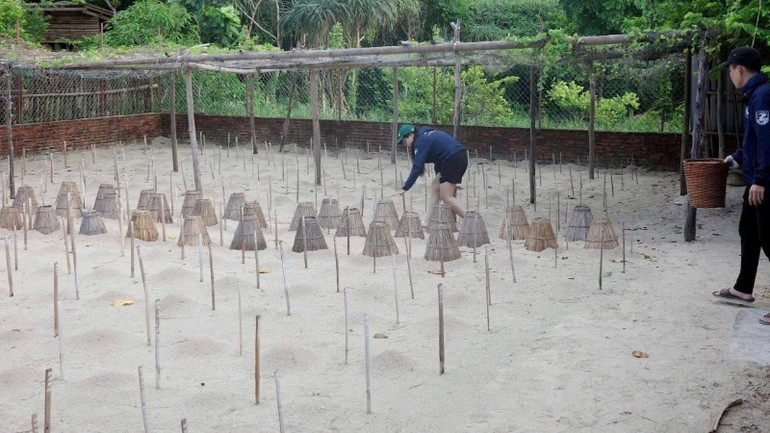
Meanwhile, at Cu Lao Cau – also known as Hon Cau island (Hon Cau Marine Protected Area, formerly part of Binh Thuan, now Lam Dong) – 10 volunteers from Dong Nai, Ho Chi Minh City and Ha Noi recently spent a week supporting turtle conservation.
Nguyen Phuong Anh, an office worker from Ha Noi, shared that although she did not have the chance to encounter a mother turtle, she cherished the days spent immersed in stunning natural surroundings. Every day, volunteers, visitors and rangers walked the nesting beaches to collect rubbish and clear obstacles. Though exhausting, this task is crucial in “welcoming” the mother turtles throughout the nesting season, which typically lasts from May to October.
Not far to the north, a sea turtle conservation programme organised by the “My Family Loves Viet Nam’s Nature” community in cooperation with Nui Chua National Park also attracts hundreds of parents and children every summer.
Le Nguyen Truc Linh (born 2003, Ho Chi Minh City), a student, recalled her first turtle-watching experience: “On the fifth night, our patrol encountered a mother turtle weighing about 90-100kg. Everyone was astonished because we have never seen such a large turtle before. But as we watched her calmly follow her maternal instinct, we were all deeply moved.” After the turtle finished laying her eggs, Linh and the team carefully relocated the nest to an artificial hatchery, to increase the hatching rate and help balance the sex ratio of the hatchlings.
From Con Dao to Nui Chua and Hon Cau, the “sleepless nights” for sea turtles are also sleepless nights for volunteers and visitors. They come not only to witness but also to act – tagging mother turtles, collecting litter, removing ghost nets, monitoring clutches, relocating eggs to safe sites, recording data, caring for them, and finally releasing the tiny hatchlings back to the vast, deep-blue ocean.
In addition to protecting forest resources and safeguarding maritime sovereignty, rangers also shoulder the special responsibility of conserving sea turtles. This includes coordinating and guiding groups of visitors and volunteers through each conservation procedure.
Tran Dinh Dong, a ranger at Hon Bay Canh
According to Tran Dinh Dong, a ranger at Hon Bay Canh, in addition to protecting forest resources and safeguarding maritime sovereignty, rangers also shoulder the special responsibility of conserving sea turtles. This includes coordinating and guiding groups of visitors and volunteers through each conservation procedure.
“The work is tough and demanding, but everyone does it with the same hope: to protect a vital marine species, so that future generations will see real turtles, not only ones in books,” Dong passionately shared.
No longer simply extracurricular activities, sea turtle volunteering programmes have been expanding and been organised basically. Conservationists from national parks and organisations such as IUCN and WWF Viet Nam emphasise that turtle conservation is not only a scientific mission but also an educational journey.
Spreading knowledge and responsibility
With a coastline stretching 3,260km, Viet Nam provides habitat for five out of the world’s seven sea turtle species – green turtle (vích), hawksbill, olive ridley, loggerhead, and leatherback. These creatures possess extraordinary navigational abilities, often returning to their birthplace decades later, even after travelling thousands of kilometres, to continue their lineage. Turtle eggs hatch after 45-55 days, yet in the wild, only about 1 in 1,000 hatchlings survive. Conservation, therefore, is not only about providing safe nesting grounds for mother turtles but also about protecting the nests, ensuring incubation, and guiding the hatchlings back to the ocean.
According to Con Dao National Park, around 500 mother turtles nest on its 18 beaches each year, producing 120,000 to 150,000 hatchlings that are released to the sea. Some tagged adults have been recorded in Indonesia, Malaysia, and even Florida (the US) before returning to nest at Nui Chua National Park.
Tourism in these areas has also shifted towards eco-orientation. According to Nguyen Khac Pho, Director of Con Dao National Park, in 2025 the park officially launched 10 marine ecosystem tours that include direct participation in turtle conservation. The tours, lasting 5, 7 or 10 days, strictly follow conservation principles, with limited participant numbers despite high costs. However, the unique and meaningful experiences have made turtle-watching and hatchling-release tours a distinctive highlight.
In 2025, the park officially launched 10 marine ecosystem tours that include direct participation in turtle conservation. The tours, lasting 5, 7 or 10 days, strictly follow conservation principles, with limited participant numbers despite high costs. However, the unique and meaningful experiences have made turtle-watching and hatchling-release tours a distinctive highlight.
Nguyen Khac Pho, Director of Con Dao National Park
Having once joined a tour with her daughter, Le Thu Ha (Ho Chi Minh City) shared that both children and adults can learn a great deal from nature. After the trip, she and her daughter decided to reduce plastic use in their household.
Over the past three years, the beaches of Nhon Hai and Nhon Ly (formerly in Binh Dinh, now Gia Lai) have also witnessed rare sea turtles returning to nest. Local community groups have gradually developed protection activities linked with tourism, such as homestays, turtle-watching tours, and coral diving trips.
The integration of tourism and sea turtle conservation in Con Dao, Nui Chua, and other coastal areas demonstrates a model that not only increases survival chances for thousands of hatchlings but also fosters a generation of environmentally responsible travellers. The sea turtle story – told through fragile eggs, sleepless nights beneath starry skies, and mountains of plastic waste cleared from beaches – carries a powerful message of reverence for nature, calling for collective action, especially from the younger generation.
